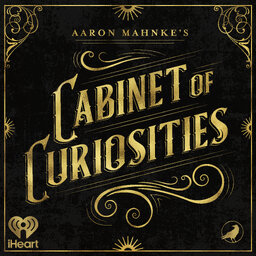A Bone to Pick
People can get confused about a lot of things, whether they are brand new ideas or old traditions. Today's tour through the cabinet features a pair of such stories.
Pre-order the official Cabinet of Curiosities book by clicking here today, and get ready to enjoy some curious reading this November!
 Aaron Mahnke's Cabinet of Curiosities
Aaron Mahnke's Cabinet of Curiosities


